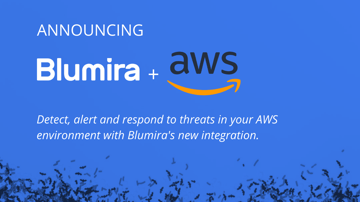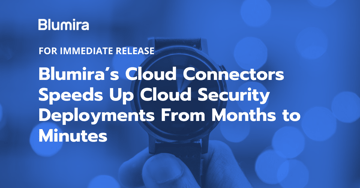Cloud won’t solve all problems, but it does significantly reduce the scope of what those problems are — and makes some of the remaining ones much bigger.
For organizations without a solid understanding of their exposed attack surface, moving to a cloud environment will only highlight that knowledge gap. Cloud often creates critical gaps in security visibility — especially for more complex hybrid environments.
7 Cloud Security Best Practices
With nearly half of organizations storing their classified data in the cloud, it’s important to close those gaps. Follow these cloud security best practices to significantly reduce risk and bring the same level of comfort that on-premises has into the cloud:
1. Understand the security risks that cloud introduces
Cloud can introduce some new risks, such as misconfigurations and insufficient identity and access controls. These risks existed before remote work, but have grown quickly:
- Lack of employee awareness, solution sprawl, and lack of visibility into employee actions
- Cloud misconfigurations, i.e. leaving an unencrypted data store exposed to the public internet without requiring authentication, or failing to apply the least privilege principle
- Data loss due to the ease of sharing data from cloud services with internal and external parties
To check whether there are misconfigurations within your cloud environment, you can perform regular audits — and automate these audits using cloud tools. A cloud SIEM like Blumira’s can help you to track changes within your cloud environment and identify causes of misconfigurations.
2. Don’t treat cloud security differently than on-premises security
Treating cloud infrastructure differently than traditional on-premise is where many organizations start to create weaknesses in their security program. It can be very easy to assume that cloud is secure by default because you’re paying for the compute and support.
In reality, cloud is another vertical of infrastructure and effort that must be maintained, monitored, and validated by new processes in an environment. IT and security leaders must apply the same level of policy and process to cloud security and ensure that their environment aligns to baseline security expectations —otherwise the creation of unknown tech debt and risk will only grow.
3. Update your existing policies and processes
In the grand scheme of cloud infrastructure, the rules have not changed wildly. Instead of changing strategies to accommodate the evolution of infrastructure, update your existing policies and processes to mitigate risk and secure these complex cloud environments.
For example, you should use least-access permissions and you should not expose ports to the internet unless you require them. What has changed with cloud infrastructure is the vastness of this complexity that requires conscious effort and understanding of the underlying technology.
4. Evaluate the operational impact of a cloud migration
The biggest change in thought process should be around cloud adoption timing and goals. As you replace on-premises infrastructure with cloud services, walk through risks as they pertain to security and operational impact.
While a cloud solution may remove the need to replace a hard drive at 2 A.M., the service could go down at 2 A.M. instead and impact your mean time to recovery processes.
5. Streamline and consolidate cloud services
Cloud will continue to become more prevalent in 2022, and organizations should aim to streamline their tools and processes, rather than creating more cloud sprawl. Tools that contribute to simplicity, rather than complexity, should be a priority for CISOs in 2022.
Getting visibility and control into your cloud environments is paramount as their usage grows within the environment. Tools like Tenacity Cloud, which support configuration and asset evaluation, will not only save money but also improve the security posture of your cloud infrastructure.
6. Train IT and security staff
Training for IT and security staff is another cloud security best practice; this not only enables the utilization of cloud-native tooling but also ensures that your team will understand and apply the recommendations.
7. Get visibility across cloud services
Equally as important is pulling data out of that cloud infrastructure into a security information and event management (SIEM) or similar log aggregation platform to provide broad visibility and detection.
Get More Cloud Visibility with Blumira >
Fast, Easy Cloud Security with Blumira
Blumira’s cloud SIEM platform protects your entire cloud environment by surfacing priority threats and offering remediation guidance.
With our new feature Cloud Connectors, organizations of all sizes can connect their cloud services — Microsoft 365, Duo Security, and AWS — to Blumira’s platform within seconds: the fastest deployment for cloud security available in the industry today. Try Blumira for free today.
Matthew Warner
Matthew Warner is Chief Technology Officer (CTO) and co-founder of Blumira. Matt brings nearly two decades of IT and cybersecurity experience to his leadership position, and a genuine passion for cybersecurity education. Prior to founding Blumira, he was Director of Security Services at NetWorks Group, a managed...
More from the blog
View All Posts
4 Cloud Security Monitoring Best Practices
Read More
Blumira Expands Its Cloud Security Coverage With AWS Security Monitoring
Read More
Blumira’s New Cloud Connectors for Faster Cloud Security
Read MoreSubscribe to email updates
Stay up-to-date on what's happening at this blog and get additional content about the benefits of subscribing.